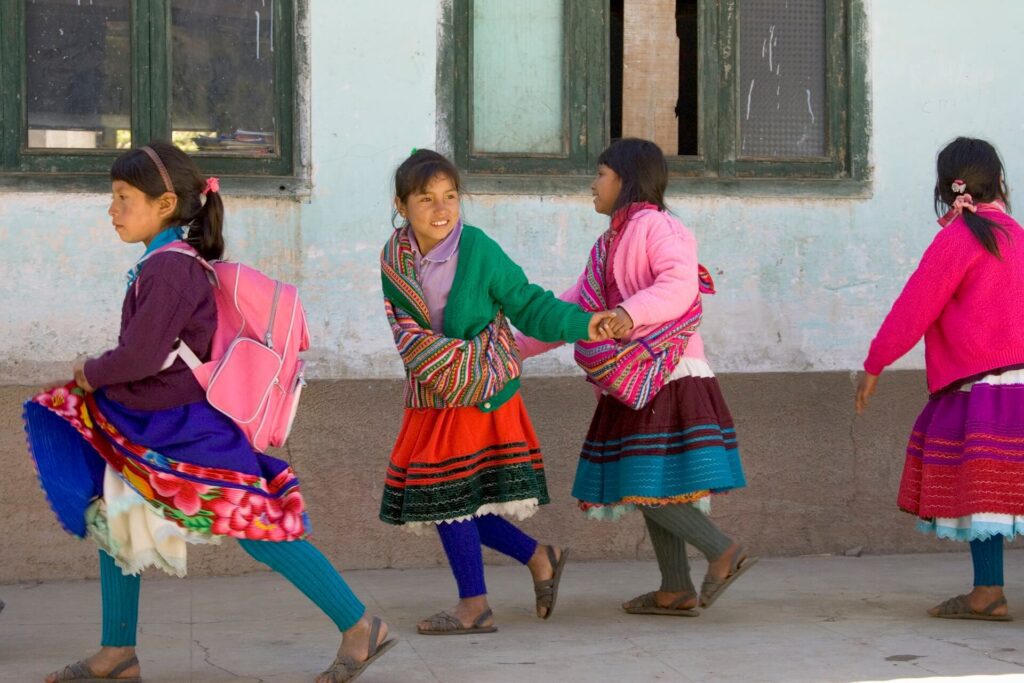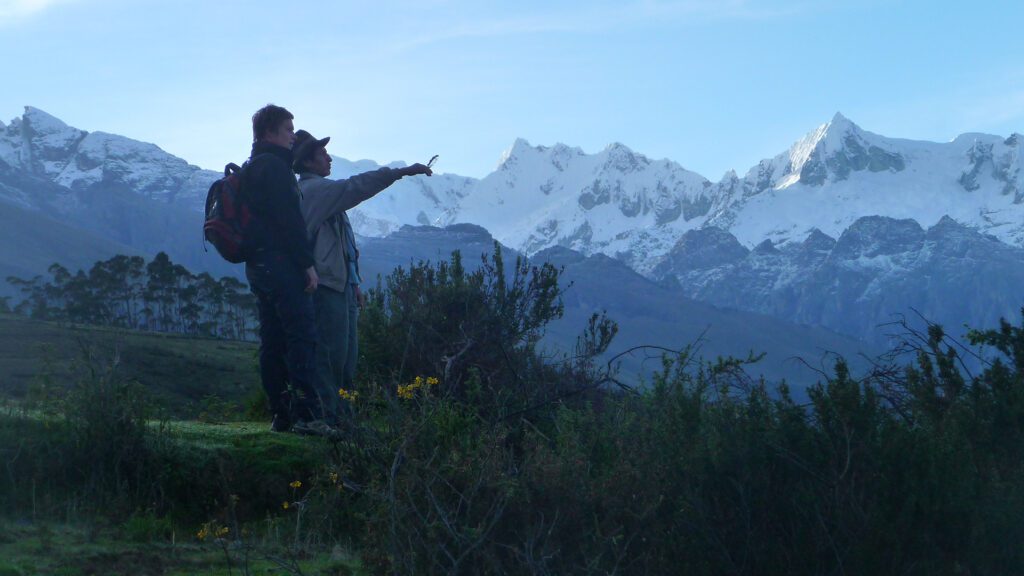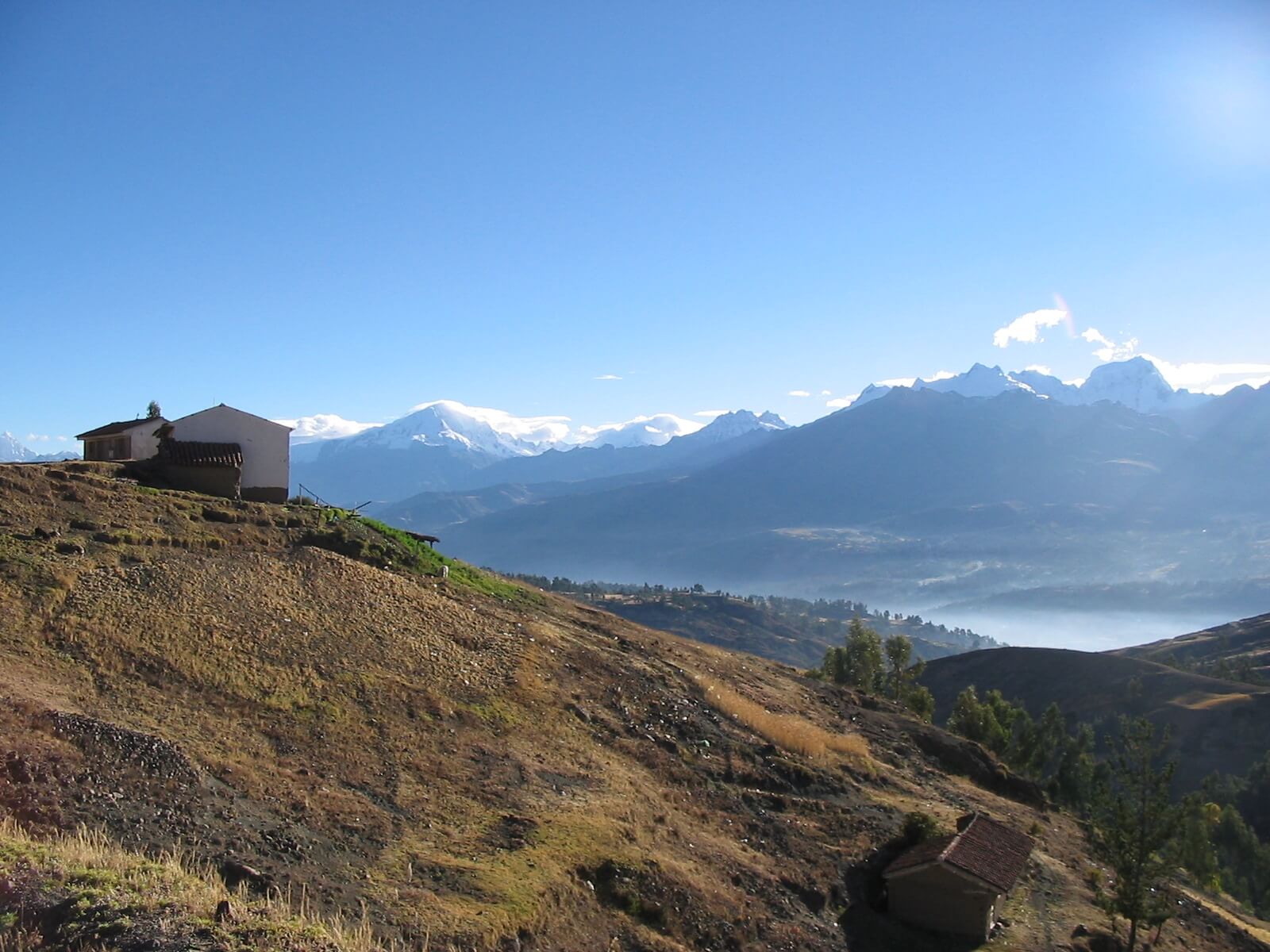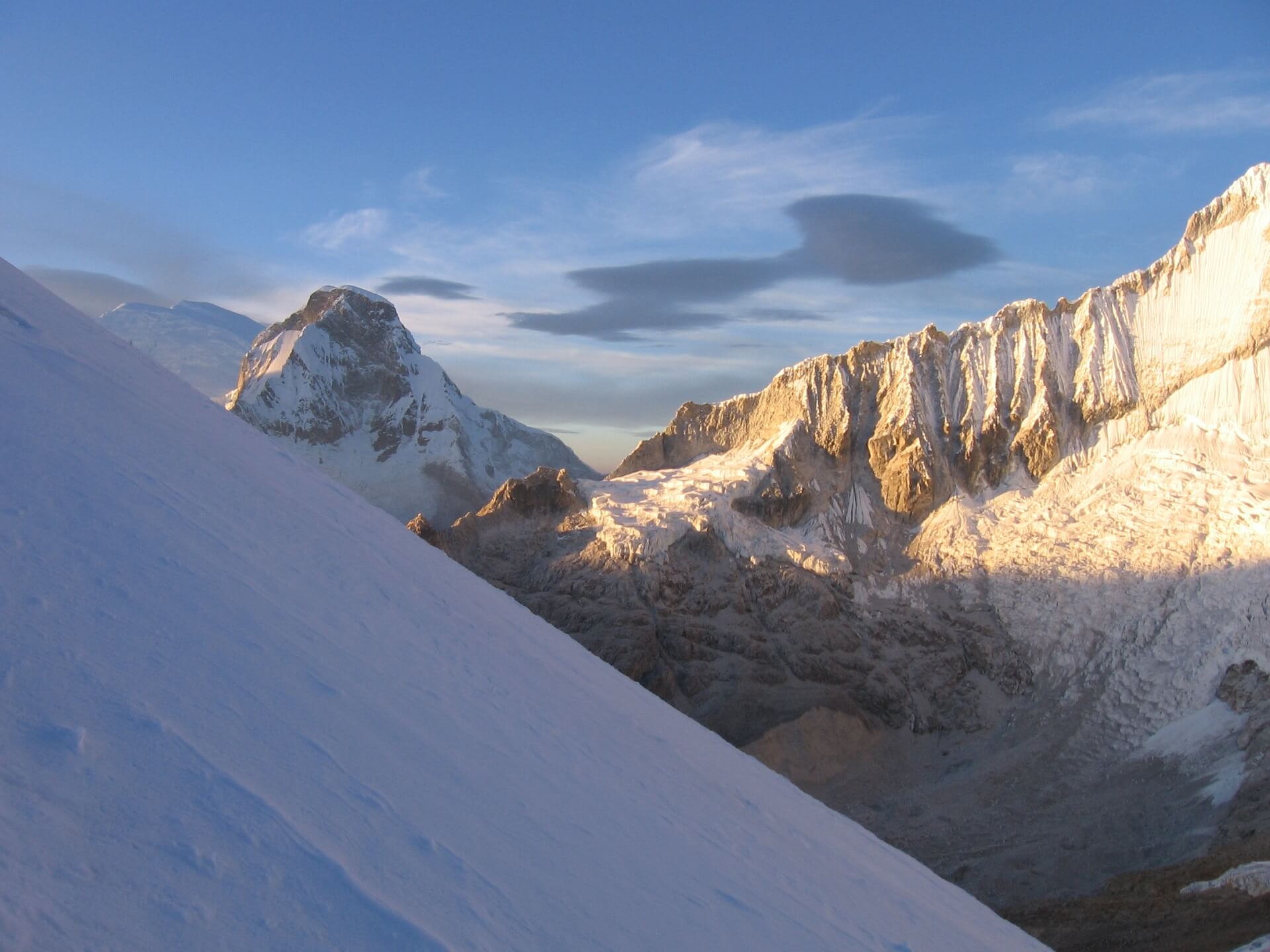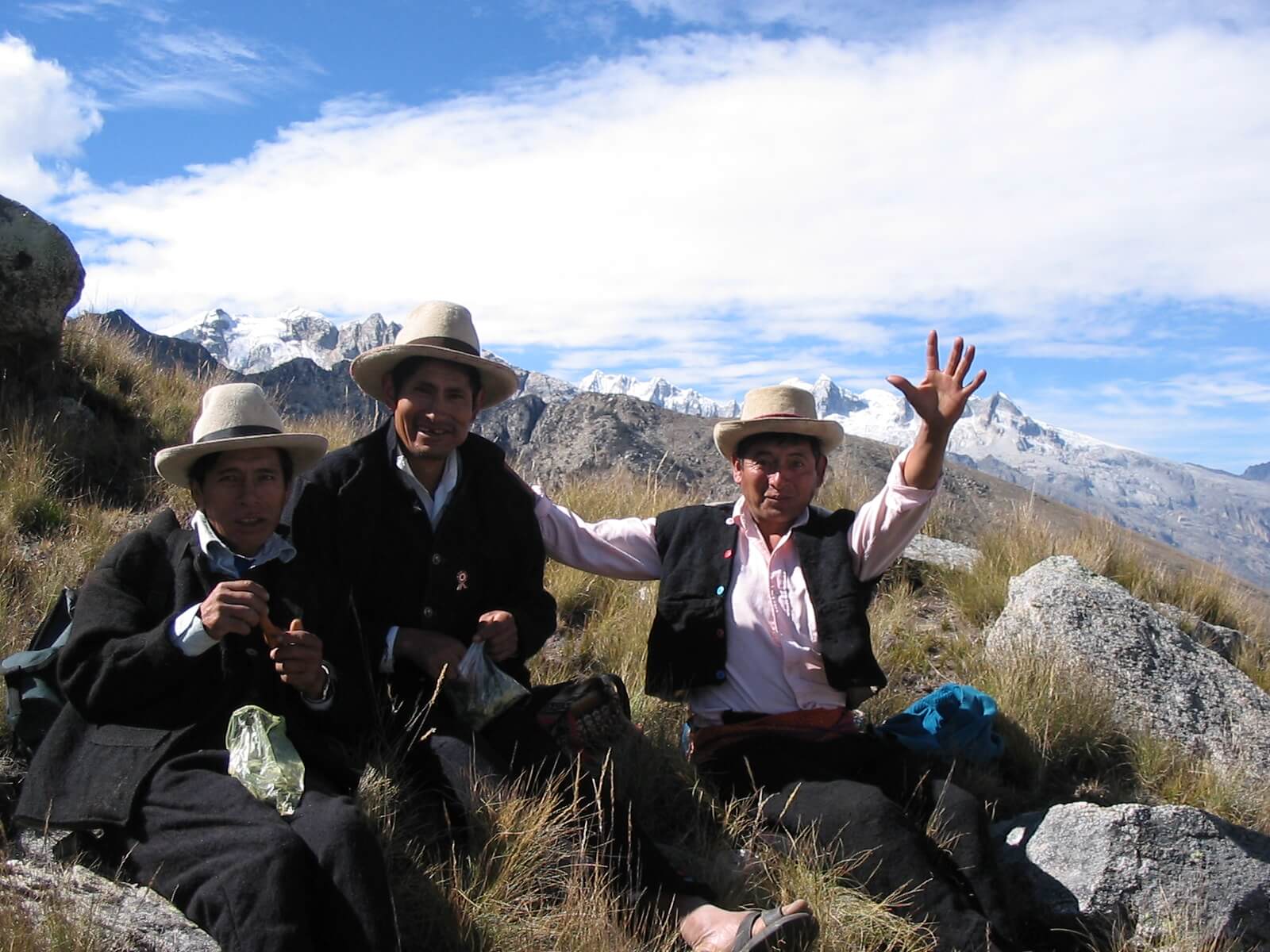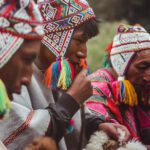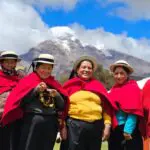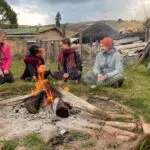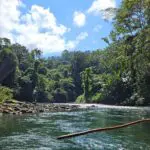Introduction to Huaraz and its surroundings
RESPONSible Travel Peru (as we were called before we changed our name to Impactful Travel) was founded in Huaraz back in 2009, so we’ll always have a special connection to it. Check out all we wish to share with you in this Travel Guide to Huaraz and the Cordillera Blanca.
In 2019, when we celebrated RESPONS’ tenth anniversary, Guido and Alejandro took the whole team (the majority of whom hail from Cusco) to Huaraz and Pablo’s house in Vicos. The intention was to take everyone back to the source of our inspiration for establishing our fantastic company.
Read our blog about RESPONSible Travel Peru´s 10th Anniversary if you want to learn more about our adventure there. It was such an emotional bonding experience celebrating those first ten years of success for sustainable tourism in Peru.
No one can take that experience away from us. An experience that was made all the more powerful by taking place so close to the beginning of the Covid-19 pandemic, when tourism in Peru (and globally) would be devastated.
Atmosphere in Huaraz
But back to Huaraz. The city itself is not famed for its aesthetic qualities. Huaraz was destroyed by an earthquake in 1970, after which a haphazard reconstruction was necessary.
The atmosphere in Huaraz, though, is exceptionally nice. There are many backpackers and climbers in town that, together with volunteers and residents from around the country and the world, make the place buzz with life. In the restaurants, nightclubs, and bars of Huaraz, you’ll find many like-minded individuals bonding over their love of travel and adventure.
Huaraz’s surroundings draw people from all over. The city is in the middle of the Callejón de Huaylas, a valley carved by the Río Santa with the Cordillera Blanca on its eastern slopes and the Cordillera Negra on the west.
On the other side of the Cordillera Negra, you’ll find the coast and desert regions. While further to the east, you’ll find green mountain valleys slowly changing into the upper jungle and then the Amazon.
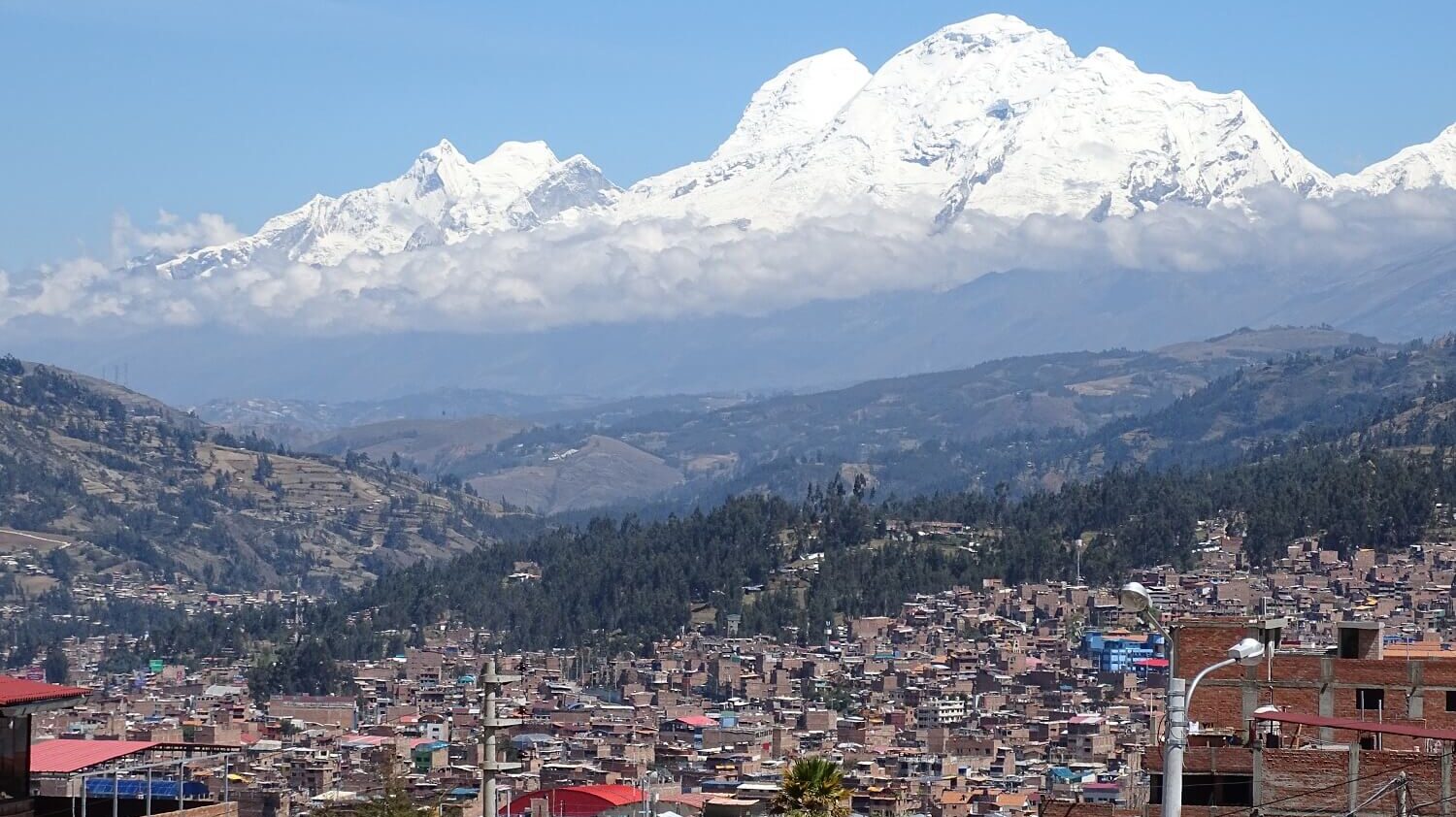
Recommendations for traveling in Huaraz
The number one reason to come to Huaraz is because of the excellent outdoor activities that can be done in the Cordillera Blanca. It´s a vast mountain range 180 kilometers long and displays incredible snow-capped peaks, 30 of which reach over 6.000 meters of altitude (19,685 feet).
Climbing, bouldering, mountain biking, day hikes, and multi-day treks, all against the impressive backdrop of the Cordillera Blanca – every activity becomes spectacular.
Our favorite day hikes are those around Lake 69 and Lake Churup: quite popular, but for a good reason. They are simply incomparably beautiful.
The lesser-visited lake Awaq will give you a more intimate experience, as will the Quilcayhuanca Valley (more for a two-day camping trip because it’s enormous) or any valley south from there.
The most famous trekking to be enjoyed in the Cordillera Blanca is the Santa Cruz trekking. However, we’d recommend alternative routes like the Rajucolta, where mass tourism has no visible negative impacts. We have also developed a multi-day trekking adventure that starts in our dear community of Vicos, passing through the Ishinca Valley and Cojup and finishing at the amazing Lazy Dog Inn: Cordillera Blanca Trek: Vicos to Ishinca.
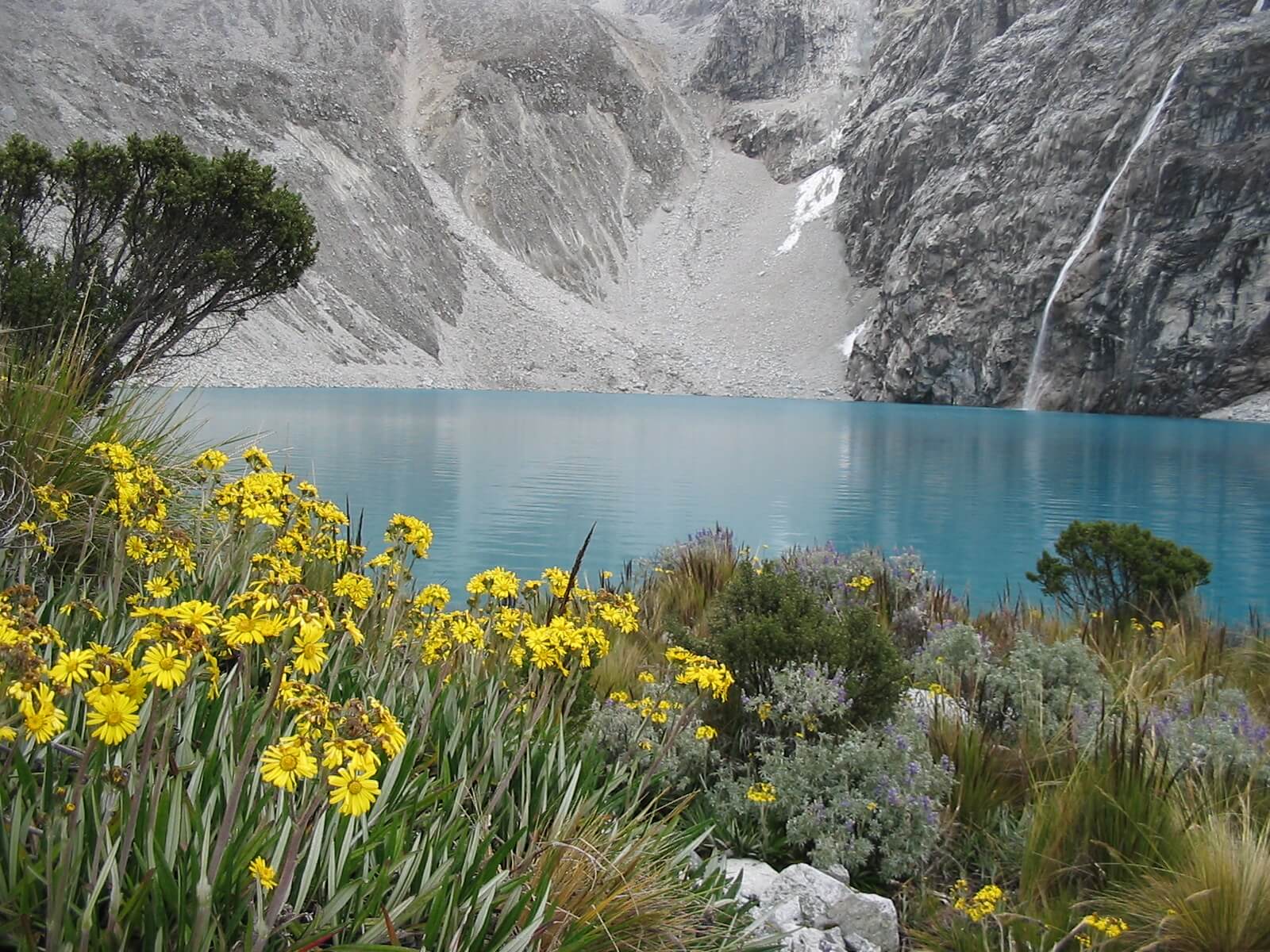
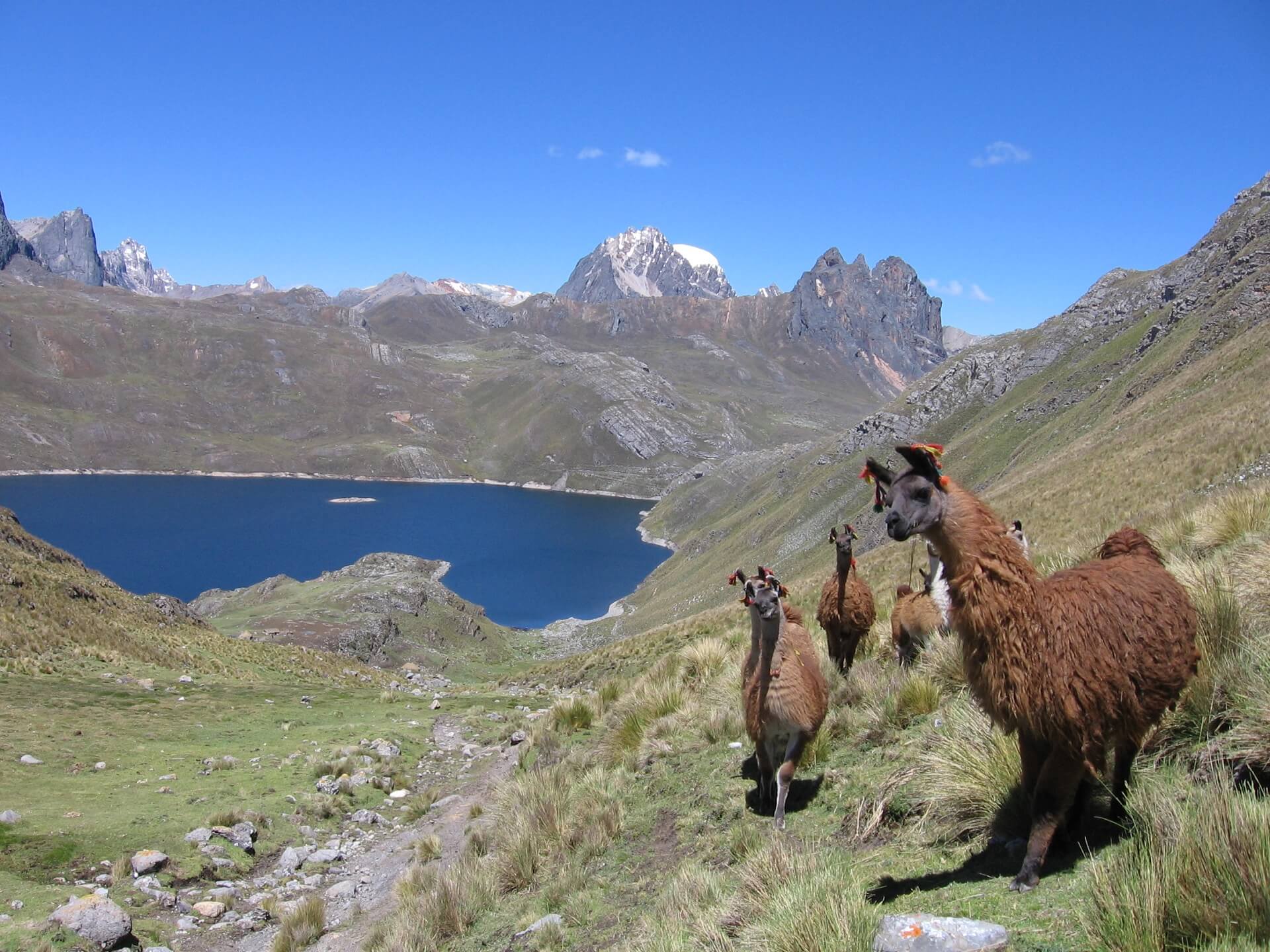
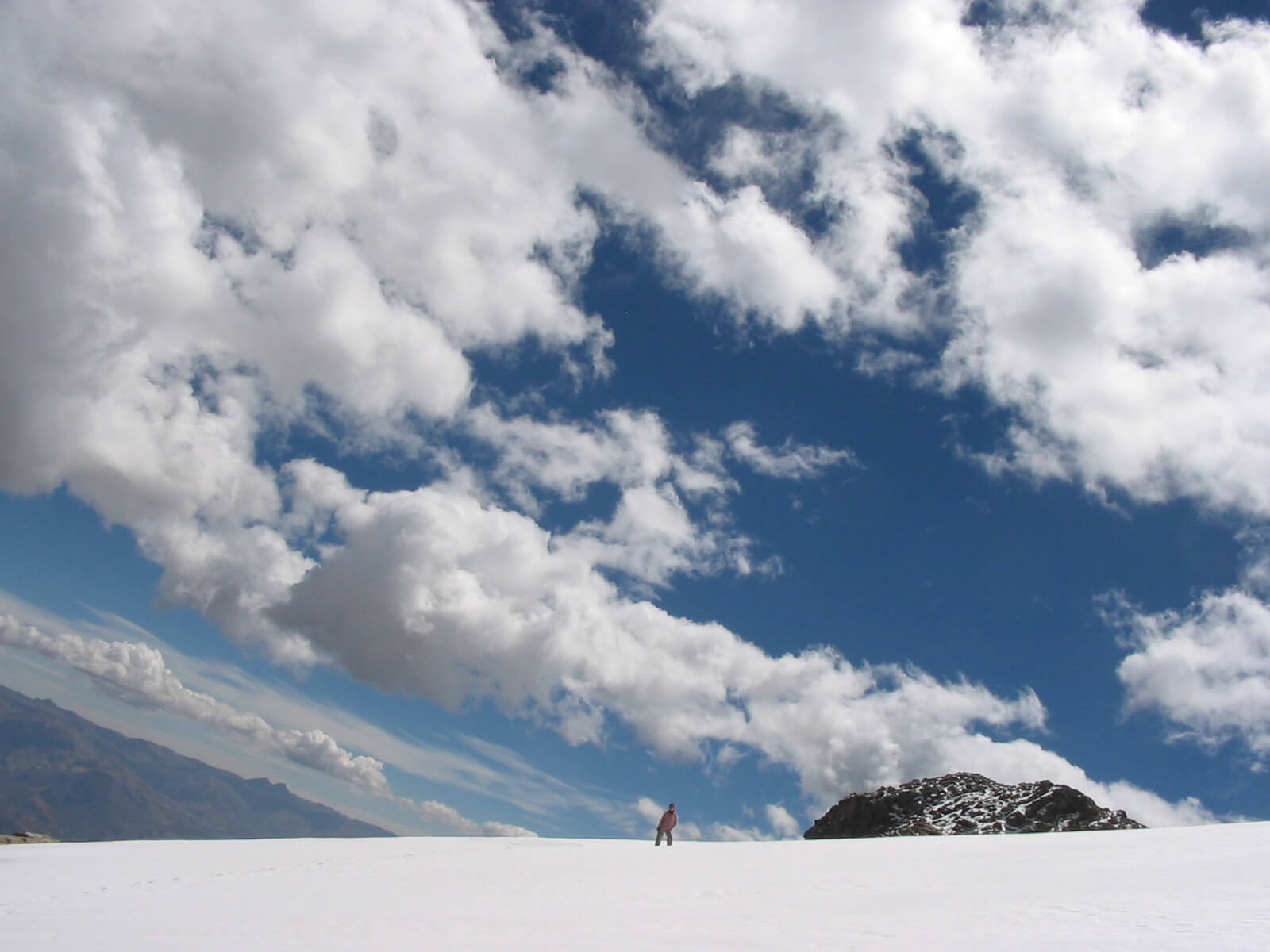
How to acclimatize before going on a trek in the Peruvian mountains
Before anything else, you need to think about your acclimatization. And since you’re reading the our blog, you probably have some interest in Community-Based Tourism in Peru… Good!
Because a stay in Vicos would be a fantastic way to allow your body to get used to the altitude while learning about the mountains’ cultural and spiritual aspects and enjoying the hospitality of local communities.
You’ll go on some hikes, of course, but also participate in the community’s daily activities if you wish, and learn about their culture, language, local myths, and legends.
Suppose you want to be prepared for the altitude that awaits you here. In that case, we invite you to read our blog on How To Stay Safe And Healthy When Traveling In Peru, where we talk about this subject and others.
Another way to start (or instead finish) your time in the area is by visiting any sustainable mountain lodges. They offer a luxury alternative to the community of Vicos and are more focused on outdoor activities and relaxing in beautiful natural environments. Our favorite lodges are the Lazy Dog Inn and the Copacabaña Lodge. Both offer very high standards of sustainability combined with excellent rooms, comfort, services, and amenities.
Traveling from Huaraz to other destinations
Huaraz is a relatively well-connected destination but don’t trust the flight connections. In recent years, flights have been canceled a lot, and you’ll end up having to change your itinerary.
Flights to Huaraz have also been suspended for significant stretches, so a good deal of research and forward planning will be required to ensure this is a viable option if you wish to fly.
Therefore (and also because of the much lower CO2 emissions), we recommend you travel by bus to and from Huaraz.
The best connections are with Lima (Huaraz is only 8 hours from Lima) and Trujillo. These routes allow you to pick from several bus companies.
If you come from Lima using Movil Bus, you can select the option of a sleeping bus with fully reclining seating options – a very comfortable option.
But to and from Lima, you can also take comfortable day buses, which we consider a suitable option (especially traveling up to Huaraz). Take the bus as early as you can to enjoy the views of the mountains!
Other destinations you can reach from Huaraz are smaller towns in the Ancash department (generally this will entail less comfortable buses).
What transportation can I find in Huaraz?
To travel from Huaraz to destinations within the region, you’ll generally use the (in)famous colectivos. These mini buses run throughout Callejón de Huaylas (the long valley between the Cordillera Blanca and Negra, where Huaraz is also located).
They leave when they’re full, are inexpensive, and are quite an experience to travel with. They will be packed with people and their belongings, so don’t expect maximum comfort. Riding the colectivos is, though, a quintessentially Peruvian experience – a choice for those who appreciate authenticity.
In every town along the valley’s main road, you can get out and use other colectivos to travel into the mountains, for example, when you go to Vicos or to the Llanganuco lakes (and Lake 69).
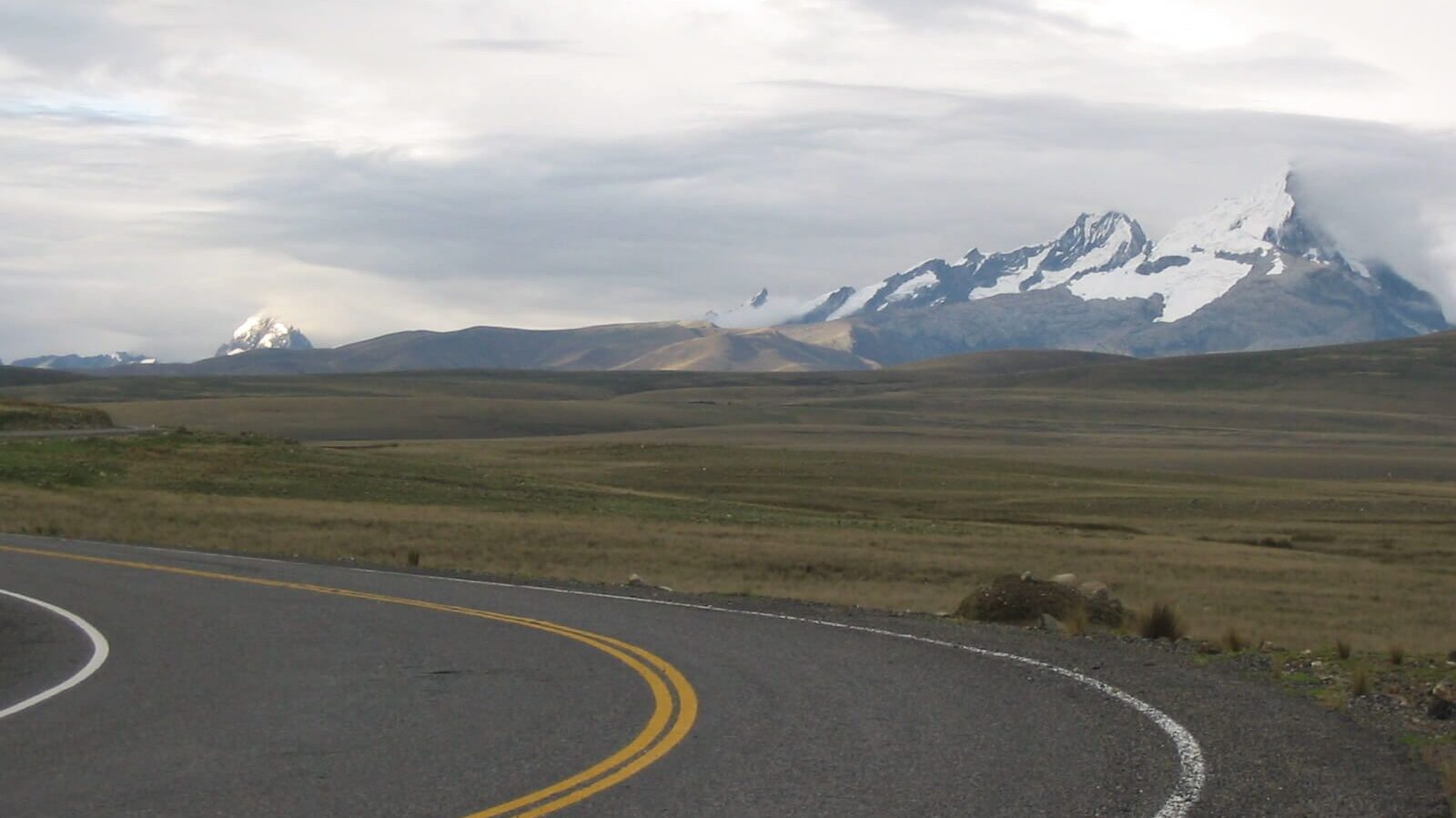
What should I pack for a trip to the mountain area around Huaraz?
If you’re visiting Huaraz, you’re probably going to be hiking in the mountains, so all our tips for trekking activities would apply. Find them in our blog on What To Pack For Your Trip To Peru. You can also download our complete packing list on that page.
How much time should I spend in the Huaraz area?
Obviously, it depends on what you want to do. But a less than three-day visit is hardly worth the long bus rides.
From five days onwards, you’ll have plenty of opportunities to undertake your favorite activities and enjoy the area. From there, you can stay as long as you want: our Co-Founding Director, Guido, arrived in January 2002 for a half-year stay but ended up living in Huaraz for the next seven years, loving it! 😉
More info on Huaraz’s weather and the best time to travel
Even though climate change has caused wet days in the dry season and dry days in the wet season, it is generally advised to avoid the months of January, February, and March because of the rain.
If you’re traveling on a budget, you’ll have the best chance of joining a group between May and September. July and August are the busiest months. Follow up by exploring our tips on the Best Time To Travel To Peru. And if you have any questions about our tours and services, get in touch.
Gallery

